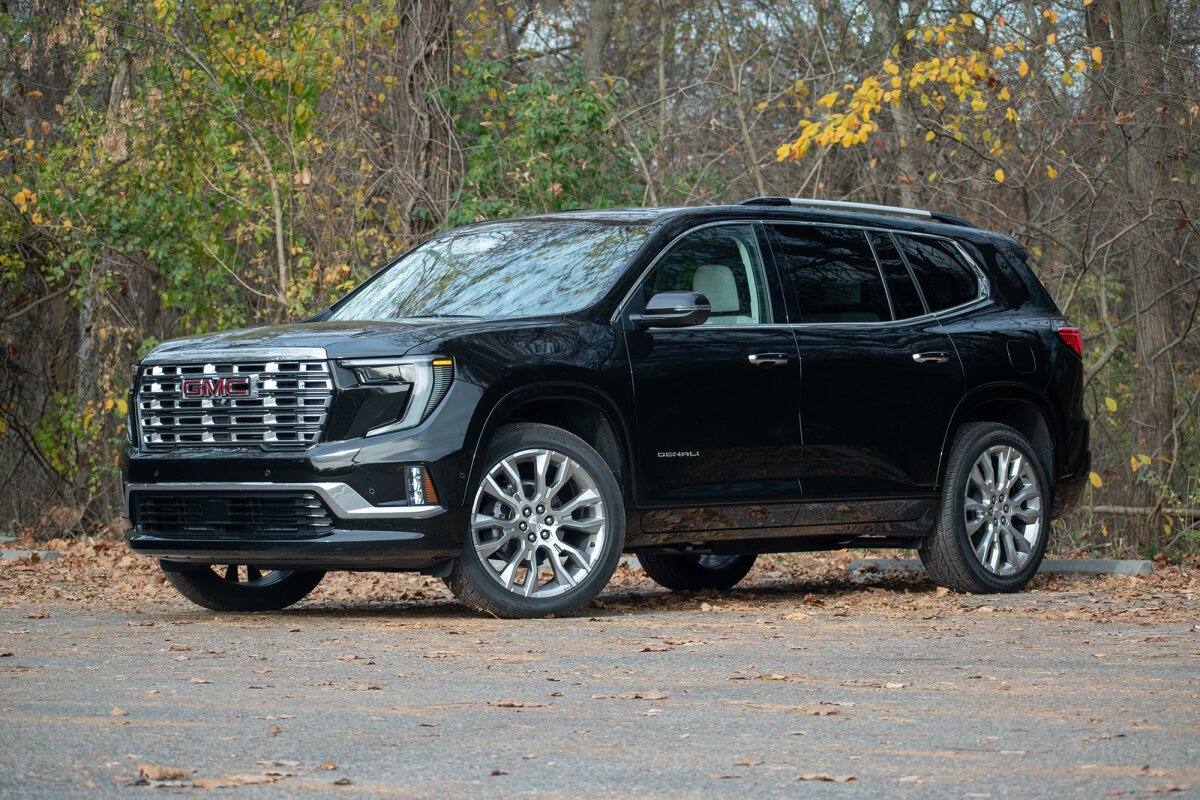When buying a midsize SUV, most people consider style, comfort, fuel economy, and features such as all-wheel drive and touchscreen infotainment systems. But one of the most important things that often gets overlooked is reliability. No matter how impressive a vehicle looks or how modern its technology is, it’s not worth much if it spends more time in the shop than on the road.
The real cost of a vehicle doesn’t stop at the sticker price or monthly payment. Frequent major repairs, especially once the warranty expires, can add thousands of dollars over the life of the vehicle. This becomes particularly important with midsize SUVs, which are often used for family trips, daily commutes, or hauling loads, things that require consistent dependability.
Some SUVs have built reputations for lasting well over 200,000 miles with nothing more than regular maintenance. Others tend to suffer from issues like transmission failure, engine problems, or electrical malfunctions far earlier than expected. These problems aren’t just expensive; they can also be dangerous if they occur while driving.
Over time, auto industry analysts and long-term vehicle owners begin to notice patterns. Some models rack up recall notices and rack up repair bills, while others quietly continue performing year after year. The differences often boil down to engineering quality, material durability, and how well manufacturers stick to tested designs.
In this article, we will look at five midsize SUVs that are known for their dependability and five that are more likely to need major repairs during ownership. This list is based on long-term reliability patterns, common mechanical complaints, and the general experiences of mechanics and long-term owners.
It doesn’t cover every vehicle in the category but focuses on some of the most talked-about models when it comes to both ends of the reliability spectrum. Whether you’re shopping for a used SUV or just want to know how your current model stacks up, this comparison will give you a clear picture of what to expect from some of the most popular midsize SUVs on the road today.
Also Read: Top 10 Cars With Easy-to-Clean Floors and Accessible Interiors
5 Midsize SUVs That Rarely Need Major Repairs
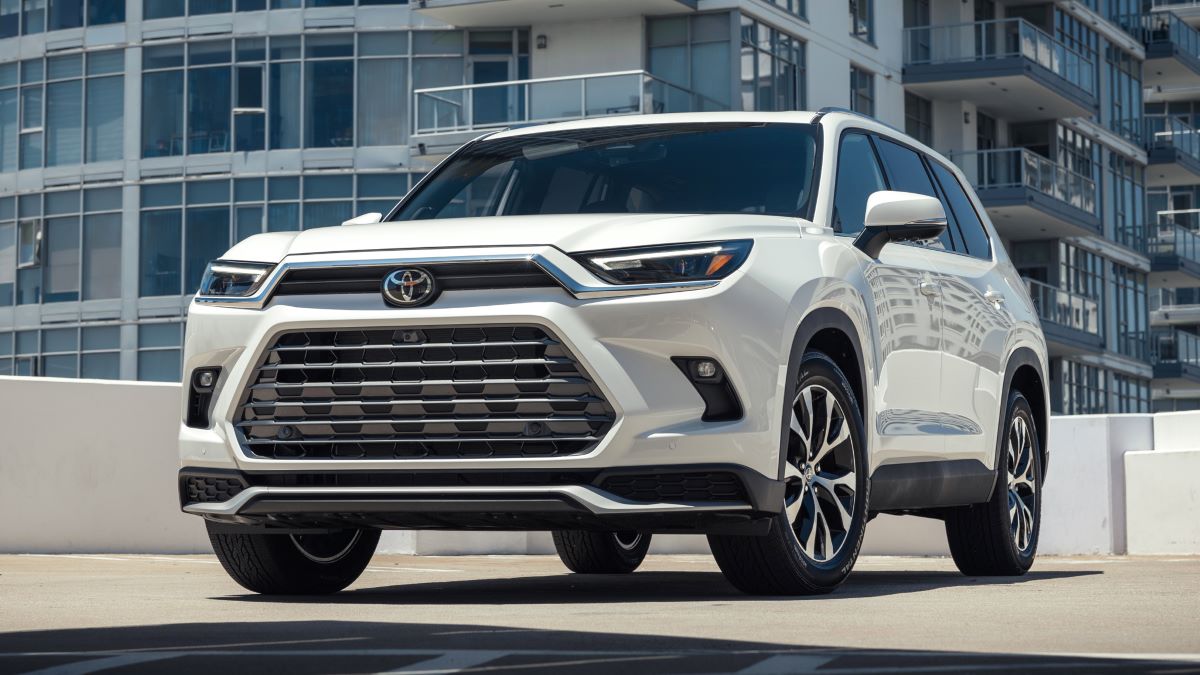
1. Toyota Highlander
The Toyota Highlander has consistently been one of the most reliable midsize SUVs for over two decades. Owners of older Highlander models often report minimal issues even beyond 200,000 miles, which is a strong testament to Toyota’s engineering and manufacturing standards.
Whether equipped with the standard gasoline engine or the hybrid version, the Highlander is built with durable parts that resist wear and tear better than most competitors. Routine maintenance like oil changes and brake replacements are typically all that’s needed for the first 100,000 miles. Major repairs such as transmission or engine failure are extremely rare for this model.
A big part of the Highlander’s success comes from Toyota’s strategy of gradual innovation. Instead of making dramatic changes year to year, Toyota improves systems that already work well. The result is a refined vehicle with fewer bugs and manufacturing defects. Many Highlanders are still on the road after a decade of use, and resale values remain high.
The vehicle’s electronics are also more reliable than average, with very few issues reported around power windows, infotainment systems, or digital displays. In areas with harsh weather, the all-wheel drive option also performs well without requiring excessive servicing.
From a mechanical perspective, one of the Highlander’s strengths is its bulletproof V6 engine. Known for quiet operation and long-term durability, this engine continues to run smoothly long after many others begin developing serious issues.
Toyota also uses high-quality transmission components that shift smoothly even at high mileage. Independent mechanics often recommend the Highlander to customers looking for a used SUV that won’t bring in repeat business. It’s that reliable. That’s also why it remains popular in both suburban family households and rural communities where breakdowns are harder to deal with.
Another factor that adds to the Highlander’s reliability is the ease of service. Parts are widely available, and the vehicle’s design allows technicians to perform most repairs quickly and easily.
This reduces labor costs and ensures the SUV gets back on the road faster. While no vehicle is completely immune to problems, the Highlander stays close to that ideal. When properly maintained, it offers one of the most worry-free ownership experiences in the midsize SUV segment.

2. Honda Passport
The Honda Passport may not have as long a history as the Highlander, but it shares much of its DNA with the well-respected Honda Pilot. Built with Honda’s standard V6 engine and featuring a solid platform, the Passport combines smooth road manners with strong long-term dependability.
Many owners find that it holds up remarkably well, with minimal mechanical complaints surfacing even after extended use. Its engine is widely praised for being both powerful and resilient, and the transmission is similarly trouble-free when properly maintained.
One of the key advantages of the Passport is how few surprise issues it presents. Common midsize SUV headaches like electrical glitches, unexpected oil leaks, or fuel system problems are rare. This means fewer surprise trips to the mechanic and more time driving with confidence.
Honda’s reputation for engineering goes beyond just performance; they focus on longevity and build quality, and it shows in the Passport. Interior fittings, suspension parts, and engine components are all designed to last through years of driving and all kinds of road conditions.
Another aspect that helps the Passport avoid major repairs is its simplicity. Honda doesn’t overcomplicate the systems in the Passport. It features a conventional gear selector, a straightforward infotainment setup, and a basic all-wheel drive system that avoids the complexity and repair costs of more advanced setups.
This means there are fewer potential failure points, especially once the vehicle gets beyond its warranty period. Even common wear parts like brakes and suspension bushings last longer than expected.
For those buying a used SUV, the Passport is often overlooked in favor of flashier models. But those who prioritize longevity and minimal repairs find it to be a hidden gem.
Whether used for city commuting or highway travel, the Honda Passport performs consistently without asking for much in return. It’s a model that quietly racks up miles without major drama, making it a smart buy for anyone hoping to keep repair costs low over the years.
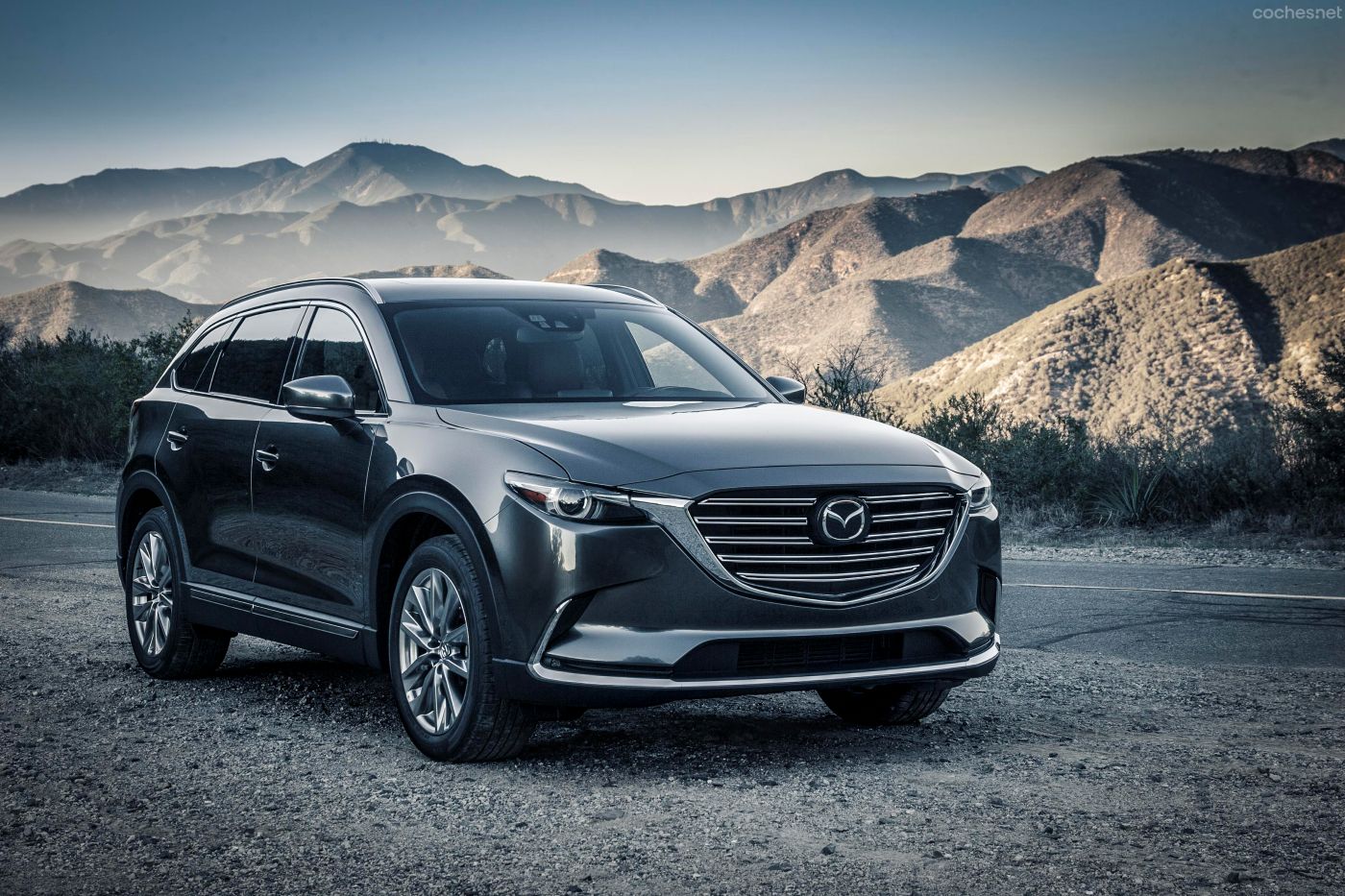
3. Mazda CX-9
Mazda has made significant strides in the past decade when it comes to quality and engineering. The CX-9, in particular, stands out as a dependable midsize SUV that rarely leaves its owners stranded.
While it offers sporty styling and engaging driving dynamics, it also manages to maintain a reputation for reliability. The turbocharged four-cylinder engine found in newer models has proven to be durable and efficient, and few major issues have surfaced, even among higher-mileage examples.
The interior quality of the CX-9 also deserves mention. Unlike many competitors, Mazda equips its SUV with near-luxury materials and solid construction, which holds up well over time.
Buttons don’t fade, seats don’t wear out quickly, and there are few rattles or squeaks, even after years of use. Electrical problems are uncommon, and the infotainment system is one of the more stable ones in the segment. Owners generally report that everything just works, which isn’t something you can say about every midsize SUV on the market.
Mazda has also been praised for its commitment to simplicity in mechanical systems. While the CX-9 does feature a turbocharger, it avoids more complex hybrid systems or air suspensions that can become expensive to maintain.
The result is a solid, efficient vehicle with fewer potential trouble spots. Mechanics often find the CX-9 easy to work on, and parts availability is good, even for models that are a few years old. Repair costs, when they do arise, are lower than many luxury-branded SUVs with similar features.
Owners of the CX-9 often report that the SUV continues to perform well past 100,000 miles with nothing more than routine maintenance. It may not be the most famous midsize SUV on the market, but it’s quietly become one of the most reliable choices for those who want a premium feel without the premium repair bills. For families or individuals who need comfort, performance, and longevity in one package, the Mazda CX-9 is a strong candidate.
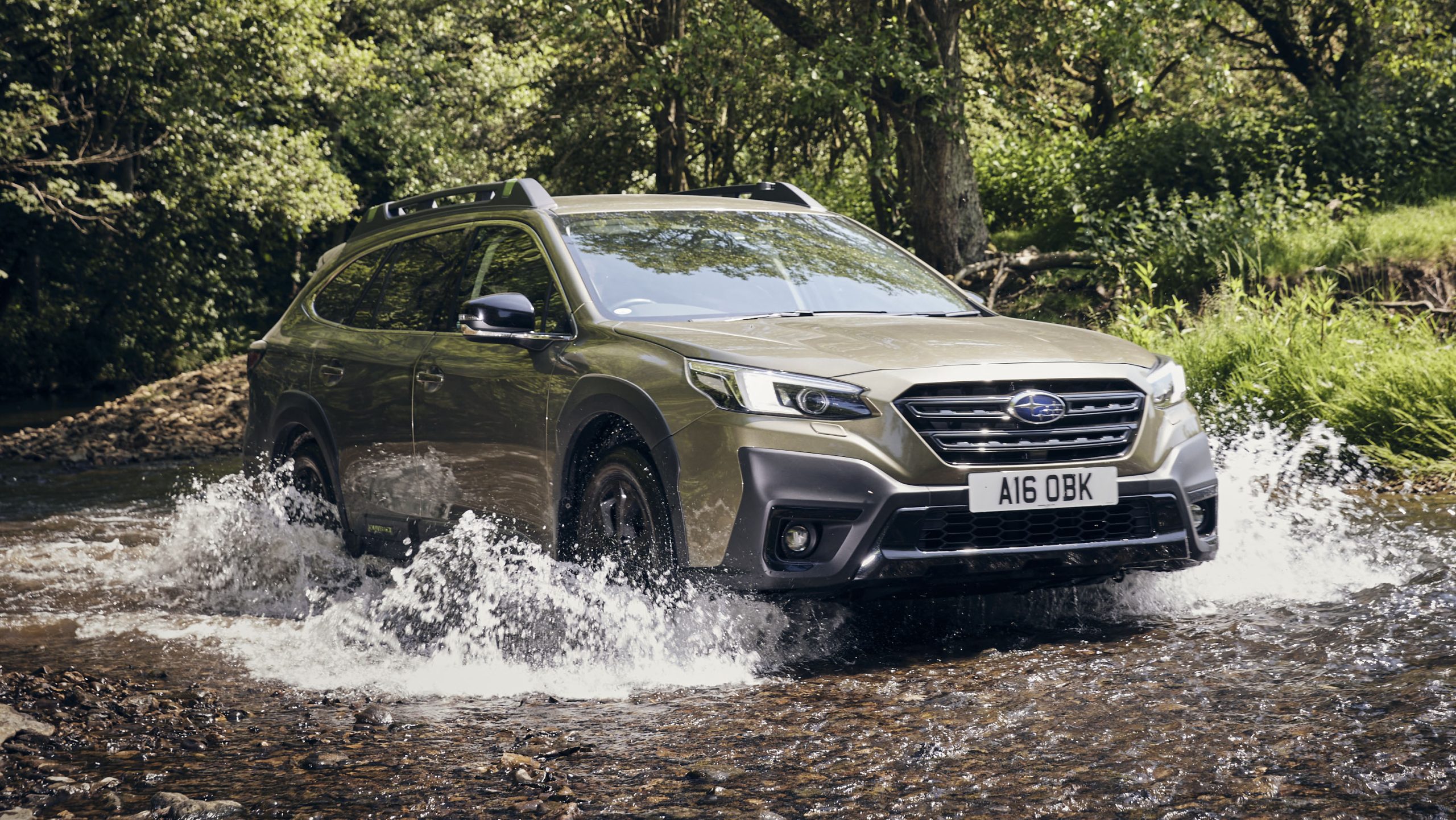
4. Subaru Outback
Though it straddles the line between wagon and SUV, the Subaru Outback is often grouped with midsize SUVs due to its size, capability, and popularity. Known for its standard all-wheel drive and rugged appeal, the Outback also scores high in long-term reliability.
Subaru’s flat-four engine design has seen continued refinement, and while earlier models had issues with head gaskets, the last several generations have proven to be far more durable. Owners who stick to routine maintenance can expect their Outback to last well beyond 150,000 miles.
Subaru’s engineering tends to focus on practical strength rather than flash, which benefits long-term ownership. Suspension components, drivetrain parts, and electronics are designed to hold up under both city and off-road use.
In snowy or rural areas, the Outback is a common sight not just because of its traction but because it can be trusted in tough conditions. The vehicle is relatively simple to maintain, and mechanics familiar with Subaru often praise the ease of access to critical components.
The interior of the Outback is also designed with longevity in mind. While it may not be the flashiest, it resists wear well and stays functional even after years of hard use. Climate control systems, seat heaters, and infotainment units rarely suffer from the issues seen in other brands. The all-wheel drive system is mechanical rather than software-dependent, which results in fewer repair headaches down the line.
Drivers who own the Subaru Outback typically cite its all-season capability, comfortable ride, and simple maintenance as reasons for long-term satisfaction. What makes it stand out is not just that it avoids major repairs, but that it avoids them while being used in ways that push many vehicles to their limits. From rough terrain to mountain commutes, the Outback handles demanding driving scenarios while staying mechanically solid.
The symmetrical all-wheel drive system is particularly durable, offering stability without relying on advanced electronics that could fail later. As with any vehicle, preventative maintenance is key, but Subaru’s schedule is relatively modest and parts are reasonably priced compared to European rivals.
It’s not unusual to find Outbacks from 10 or even 15 years ago still being driven daily with original drivetrain components intact. While it may not win awards for luxury or power, it stays reliable long after many of its competitors start requiring high-dollar repairs, making it a favorite among pragmatic buyers who plan to keep their cars for the long haul.
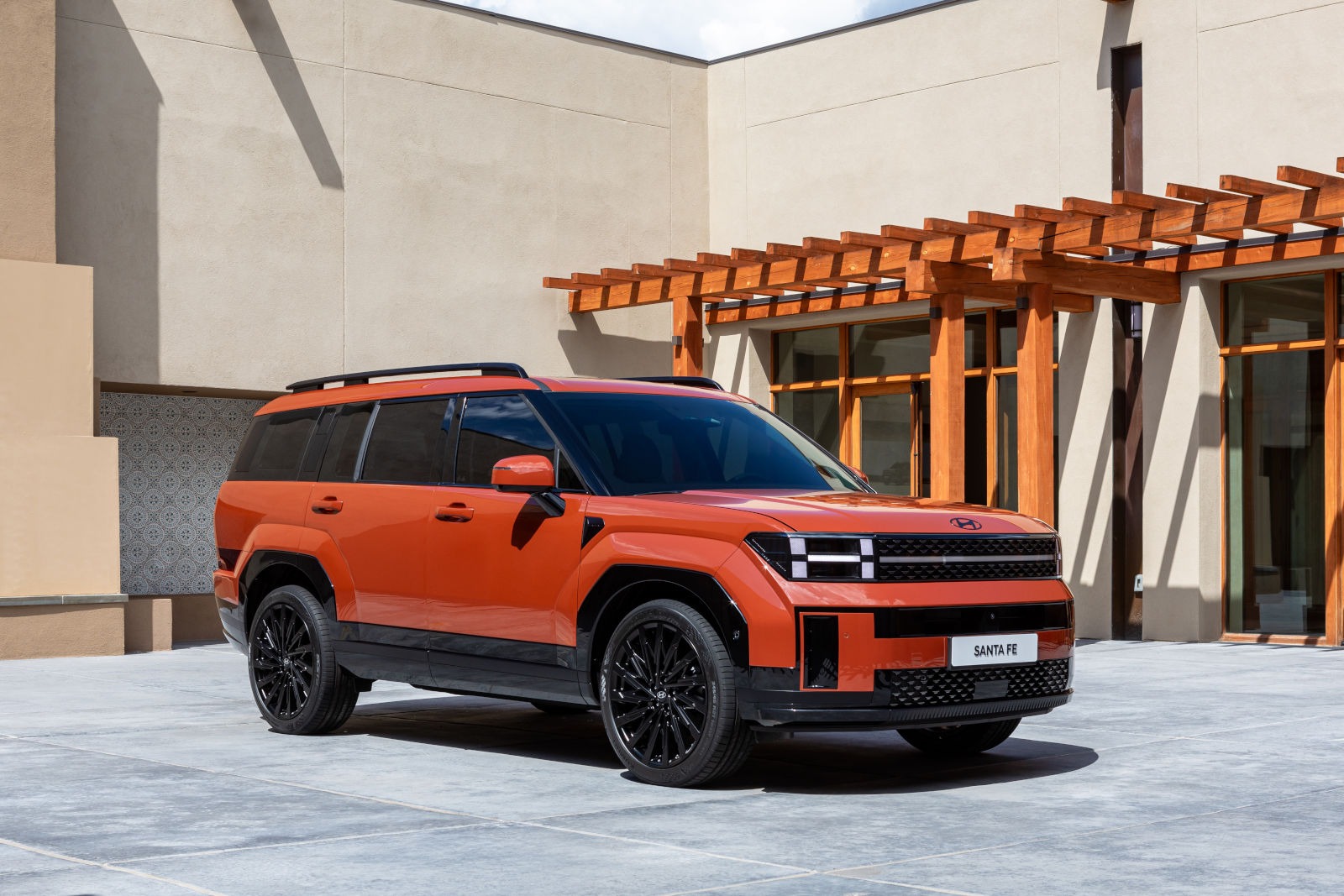
5. Hyundai Santa Fe
The Hyundai Santa Fe has become one of the most reliable midsize SUVs in recent years, thanks in large part to the brand’s major investments in quality control and engineering. Once viewed as a budget alternative to more established names, Hyundai has steadily gained respect in the reliability space.
The Santa Fe, particularly the models from 2018 onward, are well built and feature engines and transmissions that hold up under consistent use. Complaints about major drivetrain issues are rare, and many owners report driving well beyond 100,000 miles without encountering any major mechanical faults.
The build quality is high, and many of the systems inside the car continue to function properly even after years of ownership. Common wear items like belts, hoses, and brakes last longer than expected, and there are very few recurring issues that plague the model.
Another factor that helps the Santa Fe remain repair-free for long periods is Hyundai’s generous warranty, which not only encourages owners to perform regular maintenance but also means repairs are often addressed before they develop into major problems. However, even when the warranty period ends, the SUV generally doesn’t suddenly fall apart.
The engines, especially the naturally aspirated 2.4L and the turbocharged 2.0L, have proven to be resilient when properly serviced. The automatic transmissions are also smooth and consistent, with fewer reports of failure compared to some competitors.
Technicians often remark that the Santa Fe is easy to service, with good access to components and logical design under the hood, which means repair times (and costs) are generally low when issues do arise.
Hyundai also benefits from using standardized parts across several models, which means that replacements are usually available and affordable. The electrical system, often a weak spot in modern vehicles, is surprisingly solid in the Santa Fe, with few widespread complaints about dashboard issues, infotainment system malfunctions, or faulty sensors.
Owners who use the Santa Fe for family duties, long commutes, or weekend adventures often praise how little drama it presents. It starts, runs, and performs with consistency, without unexpected warning lights or expensive surprises. For a vehicle that has grown from a budget option to a well-rounded competitor, the Santa Fe now holds its place among the most dependable midsize SUVs on the road today.
5 Midsize SUVs That Always Need Major Repairs
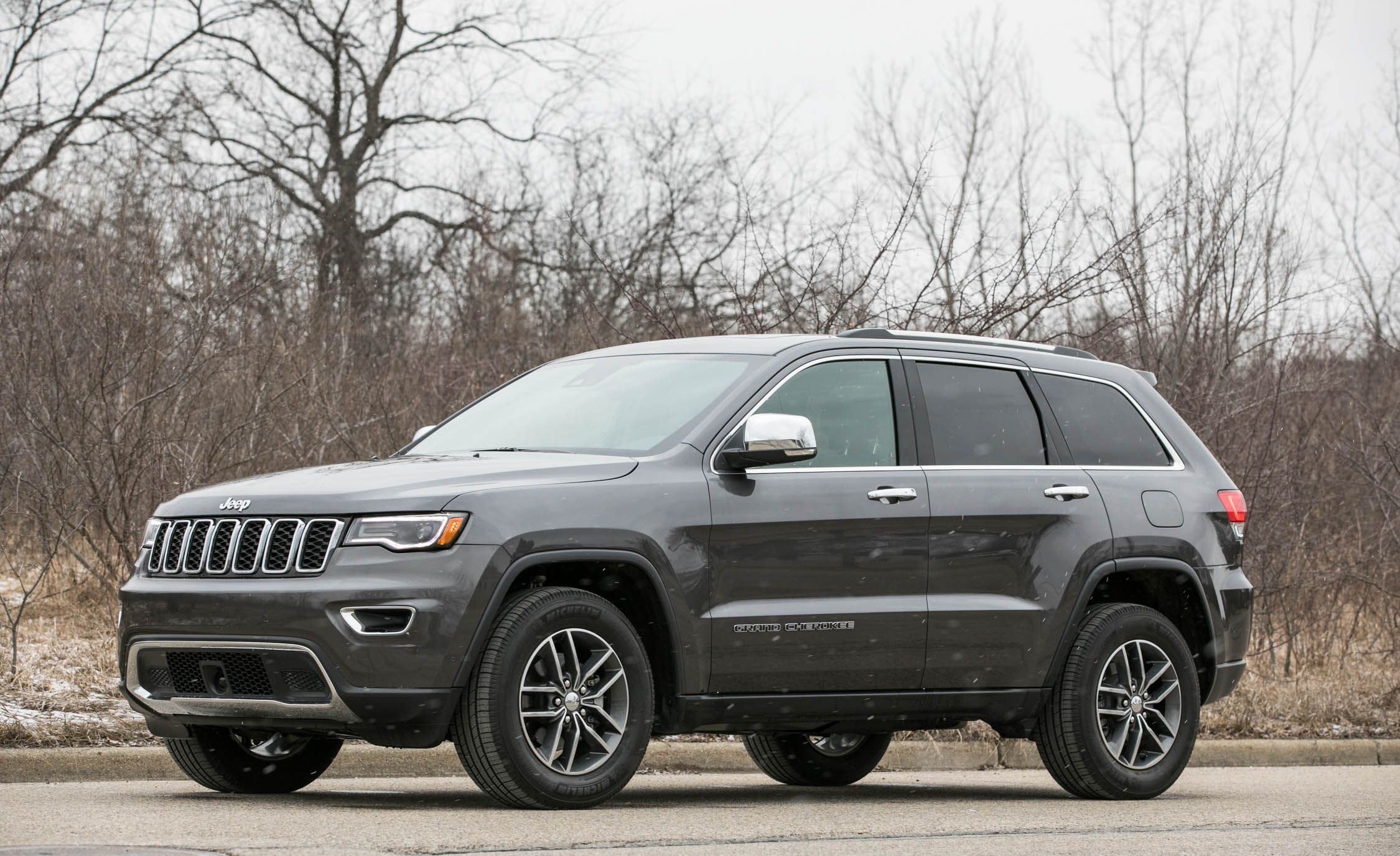
1. Jeep Grand Cherokee
The Jeep Grand Cherokee has long been associated with off-road capability and rugged styling, but its reliability record is far from ideal. While it offers powerful engine options and attractive designs, it is also known for frequent major repairs, especially in models built between 2011 and 2020.
One of the most notorious issues involves transmission failures, particularly with the 8-speed automatic introduced in later years. Owners have frequently reported hard shifts, total failures, or erratic performance even at relatively low mileage.
These repairs are not cheap and often require complete transmission replacement, costing several thousand dollars. On top of this, engine issues such as cylinder misfires, oil leaks, and overheating problems are common, particularly in higher-mileage units.
Electrical problems also plague the Grand Cherokee lineup. Faulty wiring harnesses, glitchy infotainment systems, and random sensor failures often lead to persistent warning lights and visits to the dealership that don’t always solve the problem. The air suspension system, available in higher trims, is another major point of failure.
Many owners have found themselves dealing with collapsed suspension at around 70,000 miles, with repair costs often exceeding $1,000 per corner. These problems don’t just cause financial strain, they also result in a significant loss of trust in the vehicle. For people who depend on their SUV to get to work or transport their families, the Grand Cherokee can become a frustrating ownership experience.
The irony is that many people are drawn to the Grand Cherokee for its promise of durability and off-road readiness. While it can certainly handle rough terrain, its long-term mechanical consistency doesn’t hold up to that promise. Owners who use the vehicle as a daily driver often find themselves spending more on repairs than expected, especially as the vehicle ages.
The high cost of replacement parts, the complexity of the systems involved, and the reputation for mechanical unpredictability combine to make the Grand Cherokee one of the more high-maintenance midsize SUVs. Even loyal Jeep owners have expressed disappointment in the SUV’s reliability, often citing repeated issues that erode the confidence they once had in the brand.
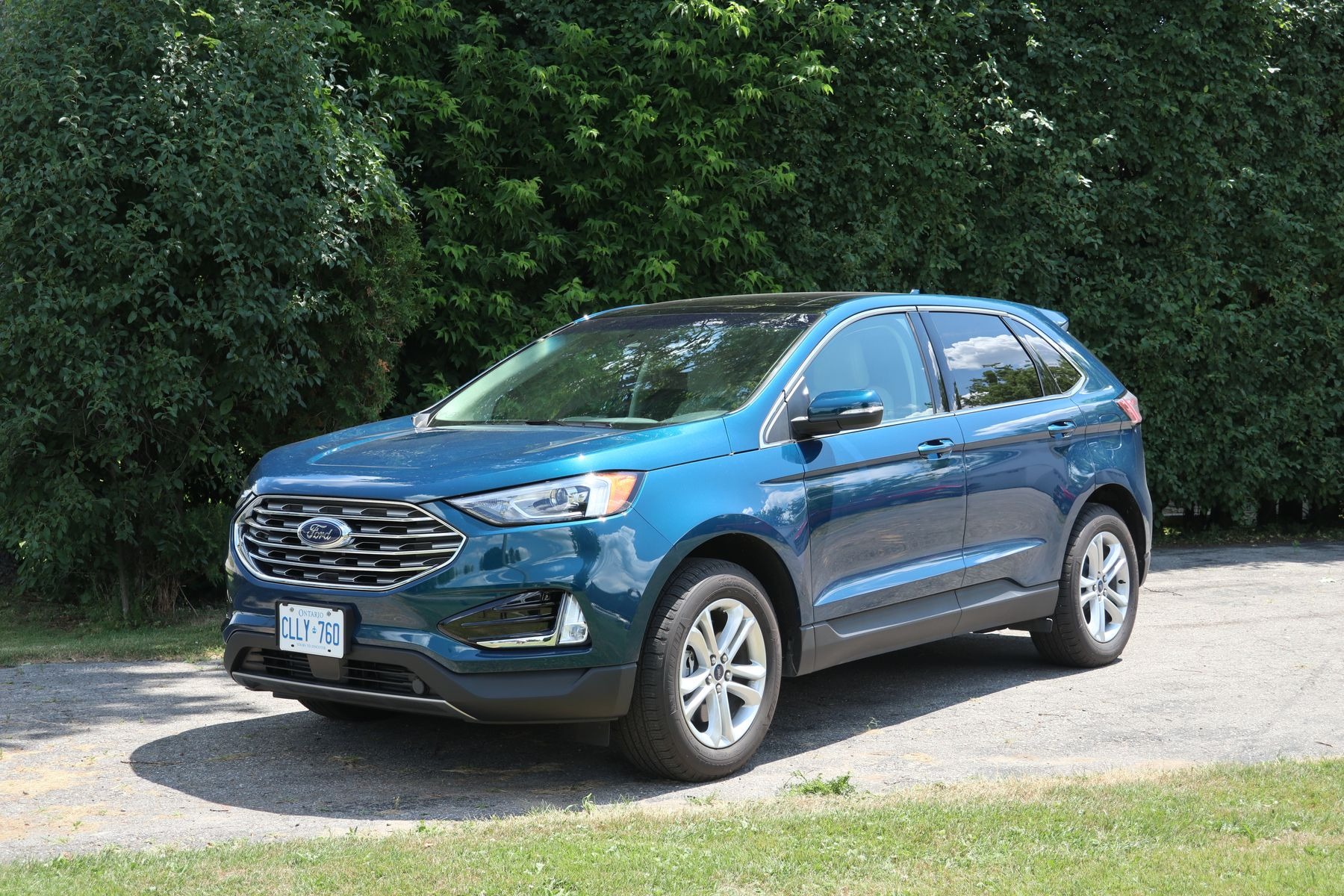
2. Ford Edge
The Ford Edge is another midsize SUV that struggles with long-term reliability. Although it boasts a comfortable interior and smooth ride when new, the Edge has been associated with several recurring mechanical problems that can lead to major repair costs.
Among the most common complaints are issues with the engine, especially the turbocharged EcoBoost variants. These engines have been known to suffer from coolant intrusion into the cylinders, a problem that can lead to complete engine failure. Some owners have reported needing engine replacements before reaching 80,000 miles. Ford has issued technical service bulletins related to this issue, but many out-of-warranty vehicles are left with enormous repair bills.
Transmission reliability has also been a weak point for the Edge. Both the six-speed and eight-speed automatic transmissions have been reported to jerk, slip, or outright fail. These issues tend to surface just after the warranty period ends, adding insult to injury.
Electrical glitches are another sore spot, with many owners citing problems with the power liftgate, backup camera, climate control, and dashboard warning systems. These aren’t just small annoyances; they can render the vehicle unsafe or unusable depending on the situation. Repeated visits to the dealership are not uncommon, and parts availability for certain systems can be inconsistent, delaying necessary repairs.
Suspension and steering components also tend to wear faster than average in the Ford Edge. Problems with the steering rack, tie rods, and sway bars often surface before the 100,000-mile mark, leading to handling issues and costly repairs.
The combination of drivetrain, electrical, and suspension issues makes the Edge a risky purchase, especially for those looking to own their vehicle long-term. While newer models have attempted to improve these weak points, many of the same problems persist across multiple years. Even with regular maintenance, many owners find themselves facing big repair bills sooner than they anticipated.
For those who value reliability above all else, the Ford Edge may not be the best fit. It continues to struggle in long-term reliability studies and is often a frequent visitor to repair shops.
While it offers good comfort and features when working properly, the risk of major repairs makes it a gamble that many would prefer to avoid. When other midsize SUVs offer similar comfort with less risk, it’s hard to justify choosing a model that is known to have such a bumpy reliability track record.
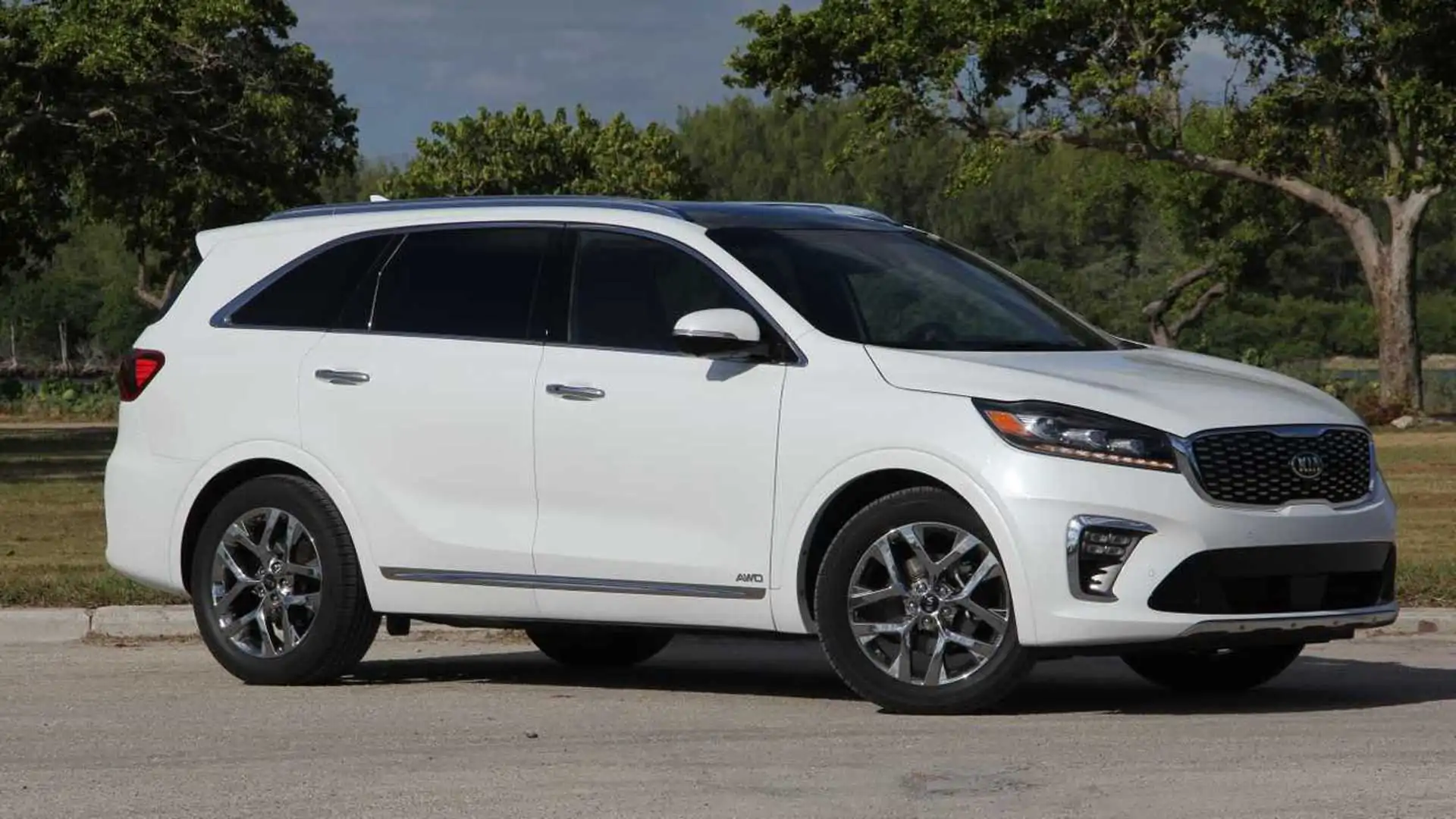
3. Kia Sorento
The Kia Sorento is one of the most stylish and feature-packed midsize SUVs in its class, but unfortunately, it also has a well-documented history of serious mechanical problems. Perhaps the most alarming issue relates to engine failures, particularly in the 2011–2019 models that used the 2.4L and 3.3L engines.
Many owners reported sudden engine seizures due to oil starvation, rod bearing failure, or complete breakdowns while driving. These problems were so widespread that they resulted in multiple class-action lawsuits and recalls. Even with recall work performed, some Sorento owners found themselves back at the dealer months later facing similar issues.
In many cases, the only real solution was a full engine replacement, which could cost several thousand dollars, especially once the powertrain warranty expired.
Another common issue with the Sorento involves its transmission. Depending on the model year, both the six-speed and eight-speed transmissions have suffered from hard shifting, slipping gears, and premature failure. These problems often occur between 60,000 and 90,000 miles, catching owners off guard and placing a serious financial burden on those who didn’t purchase extended warranties.
Even newer models with dual-clutch transmissions have raised concerns, as they can feel jerky and have shown signs of early wear. Combined with its engine history, this has created a pattern of high-cost mechanical failures that makes the Sorento a risky proposition for long-term ownership.
The Sorento’s electronics also struggle with durability. Infotainment glitches, backup camera failures, power window issues, and non-functioning driver assistance features have all been reported. Climate control systems have also failed in some models, requiring expensive component replacements.
The electrical harness seems to be a weak link in the vehicle’s design, and recurring issues often force owners to make multiple trips to the shop. Unfortunately, even after repairs are made, similar problems can resurface a few months later, making the experience all the more frustrating. The unpredictability of these failures makes it difficult to rely on the vehicle for daily transportation.
Kia has made improvements in recent model years, but the damage to the Sorento’s reliability reputation has been done. Even though the newer versions look sharp and offer good value for money on the surface, the long-term risks cannot be ignored. Used car buyers, in particular, should approach with caution.
A Sorento with higher mileage, especially without a complete maintenance history, can easily turn into a financial sinkhole. It’s the kind of vehicle that may appear attractive at first glance but ends up costing more than expected when the repairs start piling up.
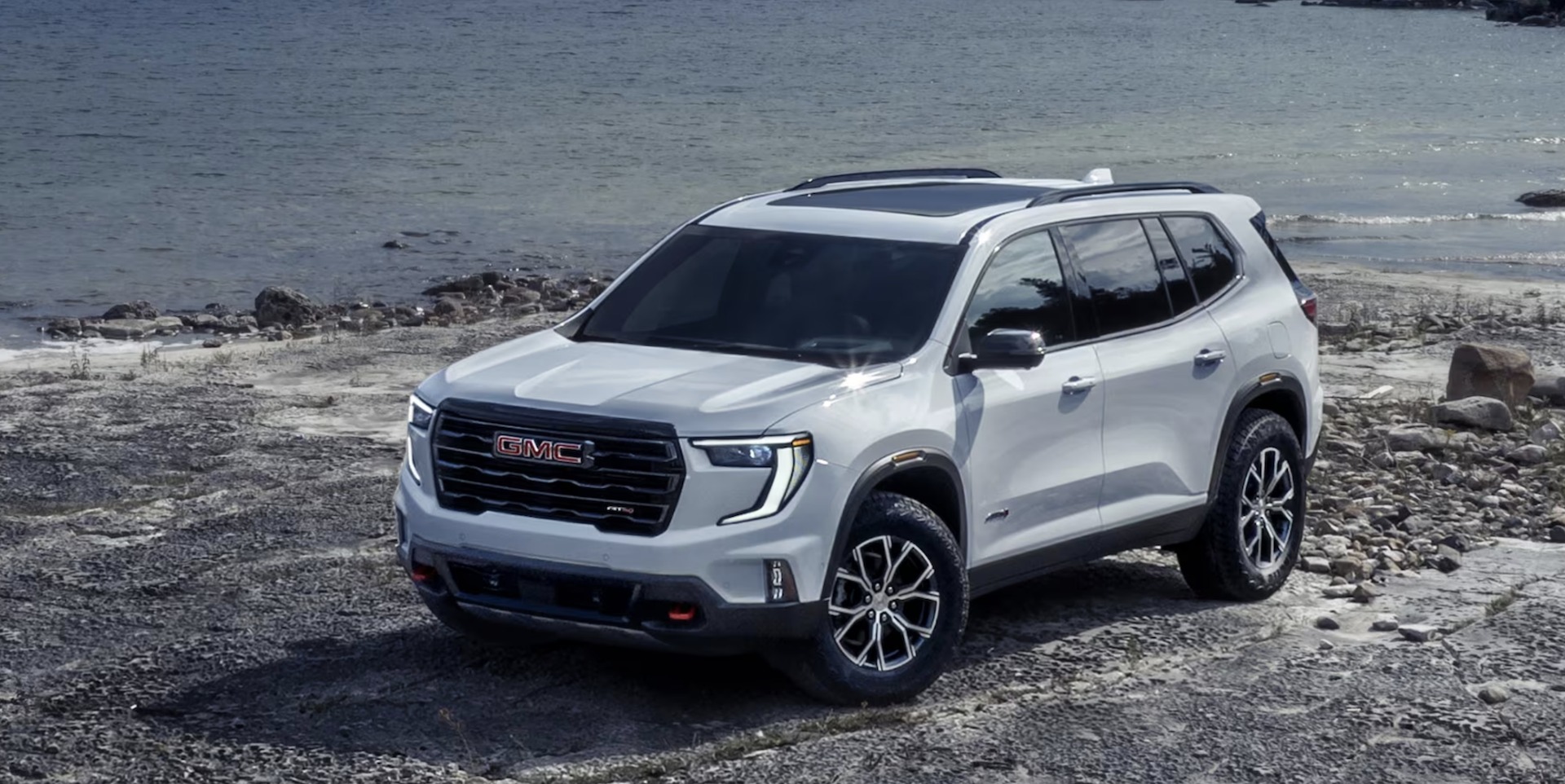
4. GMC Acadia
The GMC Acadia is often marketed as a premium midsize SUV that offers space, technology, and strong performance. However, when it comes to reliability, it frequently lands on the lower end of the spectrum. One of the most notorious problems is with the transmission, especially in the 2007–2016 models.
Many owners reported transmission failure at relatively low mileage, sometimes before hitting 80,000 miles. These failures were often sudden and required complete replacement or rebuilding of the transmission. While newer Acadias have moved to a different platform and revised powertrain, issues with jerky shifting and delayed engagement have persisted in some recent models.
Another repeated complaint involves the Acadia’s timing chain, particularly in V6 engines. Timing chain stretch and failure are known problems that can trigger a check engine light and lead to rough running or complete engine shutdown. Replacing a timing chain is a labor-intensive job and can cost upwards of $1,500 to $2,000.
In some cases, if the chain fails while driving, the engine may suffer internal damage that requires full replacement. This kind of repair is not only expensive but also highly inconvenient for families relying on their SUV for everyday use. Unfortunately, the warning signs are often subtle or come too late to prevent serious damage.
Electrical and electronic reliability also brings down the Acadia’s standing. Owners often report problems with sensors, dashboard displays, door locks, and even the electronic ignition system. Random warning lights, malfunctioning airbags, and electrical shorts have been noted in various model years.
These issues often don’t have a clear cause and can require extensive diagnostic work to identify. Even after expensive repairs, the problems may return, making ownership frustrating. It’s not uncommon for owners to feel like they’re constantly “chasing” new electrical gremlins in the system. This type of unpredictability wears down trust and increases total ownership costs significantly.
While the Acadia does offer good passenger space and a comfortable ride when functioning well, the risk of major repairs is simply too high for many buyers. Its tendency to require both major engine and transmission work, along with persistent electrical problems, makes it one of the less reliable options in the segment.
For those who value peace of mind and want to avoid costly breakdowns, the Acadia falls short. It’s a vehicle that may work well for a couple of years, but often becomes a burden as it ages, especially if driven hard or used for towing or frequent road trips.
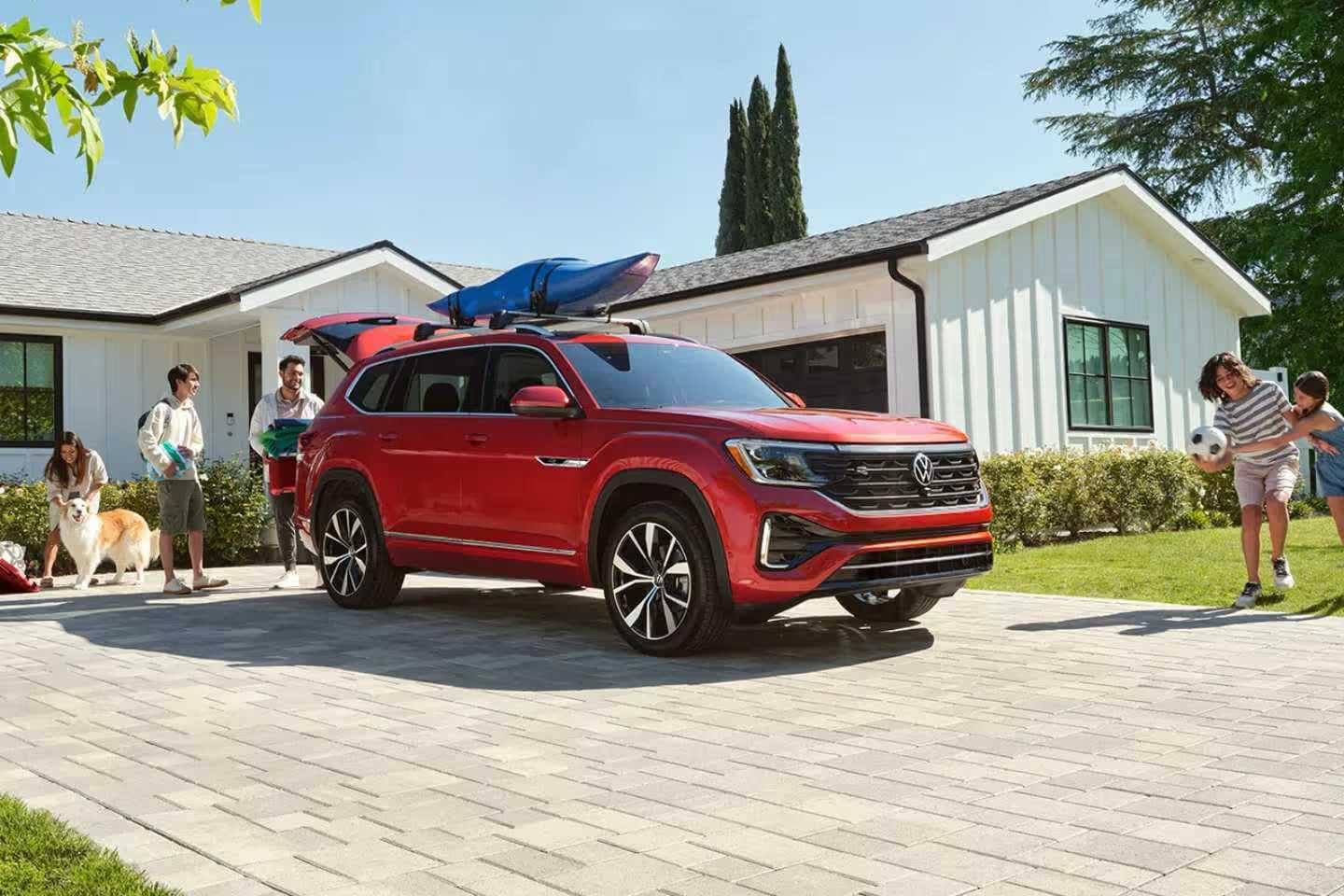
5. Volkswagen Atlas
The Volkswagen Atlas is one of the newer entries in the midsize SUV category, and while it made a strong initial impression with its roomy interior and bold styling, long-term reliability has not lived up to expectations. One of the most significant issues owners report is with the engine, particularly the 3.6L VR6 and 2.0L turbocharged variants.
These engines have been prone to oil leaks, carbon buildup, and sensor failures. Some Atlas owners have experienced sudden loss of power, hesitation during acceleration, or engine stalls at low speeds, all of which raise serious concerns about dependability. Repairs for these problems often involve extensive labor, and because some issues aren’t easily diagnosed, vehicles can spend extended time in the shop.
Transmission problems have also surfaced in the Atlas, particularly related to hesitation during gear changes and inconsistent shifting patterns. This has made the driving experience less smooth than buyers expected, and in some cases, complete transmission replacement has been required before the vehicle reached 100,000 miles.
While Volkswagen has issued software updates to address some of the shifting issues, these fixes don’t always eliminate the underlying mechanical concerns. Owners have also expressed frustration at the cost and frequency of repair visits, particularly once the warranty expires.
Another weak point in the Atlas is its electronics and build quality. Owners have encountered issues with failing infotainment systems, malfunctioning backup cameras, broken climate control sensors, and flickering instrument panels. These problems often seem minor at first but can snowball into expensive repairs.
Some owners have even reported recurring problems after having systems replaced multiple times. This kind of inconsistency creates a lack of confidence in the vehicle and contributes to the perception that the Atlas is not built to last. What’s more frustrating is that these problems are often not covered by Volkswagen’s standard powertrain warranty, and extended warranties are costly.
Although the Atlas offers lots of interior space and a quiet ride, its mechanical and electrical reliability leaves much to be desired. It’s a vehicle that might suit someone looking for short-term comfort, but long-term ownership is a risk.
Once the initial factory warranty runs out, owners may find themselves dealing with high repair costs and frequent trips to the mechanic. Compared to rivals that run smoothly past 150,000 miles with few complaints, the Atlas stands out for the wrong reasons. It’s a case where the features are there on paper, but the long-term execution falls flat.

